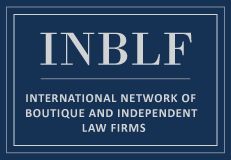
By Lucia Maffei – Technology Reporter, Boston Business Journal
Preparation, preparation, preparation. That’s the word that was probably most repeated at the “Anatomy of a Merger” panel organized on Thursday by Gennari Aronson, a Needham-based law practice specializing in general counsel services, mergers and acquisitions and financing.
The event was aimed at providing attendees, including many business owners, with a sense of the legal technicalities that are in place when companies are either sold or acquired.
The takeaway? In an M&A deal, shaking hands and uncorking champagne are, of course, part of the picture. But these moments come after months of questions asked, numbers crunched, and risks assessed.
Hence, preparation: Particularly on the selling side, people who go through an M&A deal need to prepare the ground before bringing up the subject. They need to be mentally prepared to what’s next, when the actual process begins.
Moderated by Lawrence Gennari, partner at Gennari Aronson, the discussion at the Wellesley College Club brought together panelists with expertise in all the ingredients of a deal, including accounting, corporate counseling and insurance. They were: Jim DeLeo, managing partner at accounting firm Gray, Gray & Gray; Imran Haque, corporate counsel at HealthcareSource; Laura Glynn, partner at Gennari Aronson; Emily Maier, senior vice president at Woodruff Sawyer Insurance; and John Prior, CEO at Needham & Company.
Here are three points that both buyers and sellers should keep in mind when negotiating an M&A deal:
Value-drivers for buyers and value propositions for sellers
Essentially, buyers want to see “a lack of problems,” or in other words, “a very clean, very well-run, very documented company,” Maier pointed out. Conversely, the very first thing prospective sellers want to do is getting their business in order. “If you were selling your house, and the fence outside from the front of your house was falling down, chances are you’d probably fix it before you put the ‘For sale’ sign in front of your house,” DeLeo said. Preparing a business for sale doesn’t take a month, but a year or more, DeLeo added: “Sometimes, you might not be in a tax-efficient structure, in which case you’ll need to do some pre-planning in order to give yourself as a seller flexibility to, basically, sell stock, sell assets.”
Three basic structures for getting sold
How exactly are companies being sold? “You can sell the equity, you can sell the assets, or you can have a merger—and a merger is selling the equity,” Glynn explained. “The tax consequences can be very different.” Generally speaking, selling the equity or a merger is easier than selling the assets, she continued. But when selling equity, you have to be sure that every person who has a piece of equity is going to be at the table to sign the documents, Glynn pointed out.
The ‘letter of intent’ is only the beginning
Typically, buyers are going to do the draft of the agreement, Gennari said. On the sale side, sellers need to “clean up the closet” and “find all the skeletons,” DeLeo said; on the buy side, tax consequences need to be taken into account. The last thing that is settled? “The seller is supposed to deliver a certain amount of working capital: current assets over current liabilities,” Glynn said. “If what they deliver at closing is more or less than that target, then the purchase price is adjusted dollar for dollar.”




